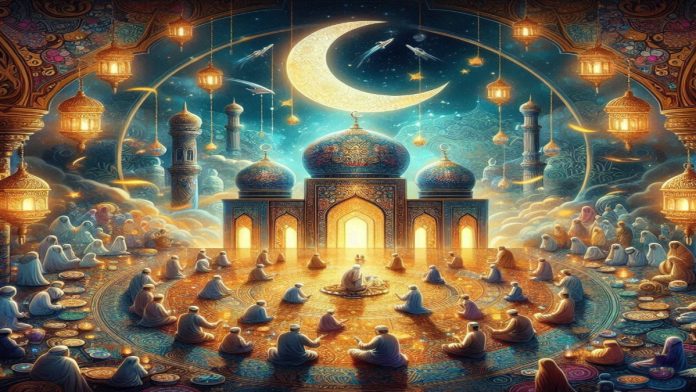Eid al-Adha, also known as the Festival of Sacrifice, is one of the most significant holidays in the Islamic calendar. Celebrated by Muslims worldwide, this festival honors the willingness of Prophet Ibrahim (Abraham) to sacrifice his son in obedience to God’s command. Understanding the customs, rituals, and significance of Eid al-Adha can enrich the celebration for those observing the festival and offer valuable insights for those who wish to learn more about Islamic traditions. How can we deepen our appreciation of this important holiday?
This guide aims to provide a detailed overview of Eid al-Adha, covering its historical background, key rituals, and cultural practices. By exploring these elements, we can gain a fuller understanding of the festival’s importance and the values it promotes, such as faith, sacrifice, and charity.
Historical Background and Significance
Eid al-Adha commemorates the story of Prophet Ibrahim and his son, which is a central narrative in Islamic tradition. According to the Quran, Ibrahim was commanded by God to sacrifice his son, Ismail (Ishmael), as a test of his faith. Demonstrating unwavering obedience, Ibrahim prepared to carry out the command, but God intervened and provided a ram to sacrifice instead. This act of devotion is celebrated by Muslims around the world during Eid al-Adha.
The festival takes place during the Islamic month of Dhul-Hijjah, following the completion of the Hajj pilgrimage, one of the Five Pillars of Islam. Eid al-Adha falls on the 10th day of Dhul-Hijjah and lasts for about three to four days, depending on the country. It is a time for Muslims to reflect on the values of faith, sacrifice, and compassion, which are embodied in the story of Ibrahim.
The significance of Eid al-Adha extends beyond the story itself. It is a time for Muslims to strengthen their faith, renew their sense of community, and engage in acts of charity. The festival serves as a reminder of the importance of obedience to God and the virtues of selflessness and generosity. By understanding the historical context and significance of Eid al-Adha, we can better appreciate the rituals and customs associated with this important holiday.
Key Rituals and Practices
One of the central rituals of Eid al-Adha is the Qurbani, or the sacrificial offering. Muslims who can afford it are required to sacrifice an animal, typically a sheep, goat, cow, or camel. This act commemorates Ibrahim’s willingness to sacrifice his son and symbolizes the believer’s readiness to give up something valuable for the sake of God. The meat from the sacrifice is divided into three parts: one-third is kept for the family, one-third is given to relatives and friends, and one-third is distributed to the less fortunate. This practice emphasizes the values of charity and community support.
Before the sacrifice, Muslims perform the Eid prayer, known as Salat al-Eid, which is held in large congregations at mosques or open prayer grounds. The prayer consists of two units (rakats) and is followed by a sermon (khutbah) that highlights the significance of the festival and the importance of following the example of Prophet Ibrahim. It is a time for communal worship and reflection, bringing together Muslims from various backgrounds to celebrate their shared faith.
In addition to the Qurbani and Eid prayer, Muslims also engage in various cultural and social activities. Families gather to share festive meals, exchange gifts, and visit friends and relatives. Special dishes are prepared, and homes are often decorated to mark the occasion. It is a time for joy, celebration, and expressing gratitude for the blessings in life. These customs and rituals contribute to the festive atmosphere of Eid al-Adha and reinforce the sense of community and solidarity among Muslims.
The Role of Charity and Giving
Charity is a cornerstone of Eid al-Adha, reflecting the festival’s emphasis on compassion and community support. One of the key aspects of Eid al-Adha is the distribution of the Qurbani meat to the less fortunate. This act of giving ensures that even those who are struggling can partake in the festive meals, highlighting the importance of sharing and generosity in Islam. By distributing meat to the needy, Muslims fulfill their religious duty and strengthen social bonds within their communities.
Beyond the distribution of meat, many Muslims also give Zakat al-Fitr, a form of almsgiving that is obligatory for those who can afford it. This charity is given to purify the wealth of the giver and ensure that all members of the community can celebrate Eid with dignity. Additionally, voluntary acts of charity, known as Sadaqah, are encouraged during this time. These acts can take many forms, such as donating money, providing food, or volunteering time to help those in need.
Eid al-Adha serves as a reminder of the values of empathy and social responsibility. By engaging in acts of charity, Muslims not only help alleviate the suffering of others but also reinforce their commitment to the principles of Islam. The festival provides an opportunity for individuals and families to reflect on their blessings and give back to their communities, fostering a spirit of unity and mutual support.
Cultural Celebrations and Traditions
Eid al-Adha is celebrated with a rich tapestry of cultural traditions that vary across different regions and communities. While the core religious practices remain consistent, the ways in which families and communities celebrate can differ significantly, reflecting the diverse cultural heritage of the Muslim world. These traditions add color and vibrancy to the festival, making it a unique and cherished time for Muslims worldwide.
In many countries, special foods and dishes are prepared for Eid al-Adha, showcasing the culinary diversity of the Muslim community. Traditional recipes are often passed down through generations, and families take pride in preparing elaborate meals that include festive sweets, savory dishes, and the Qurbani meat. These meals are not only a feast for the senses but also a way to honor cultural heritage and bring families together.
Cultural celebrations also include various forms of entertainment and social activities. In some regions, there are parades, music, and dance performances that reflect local customs and traditions. Children often receive new clothes, gifts, and money, adding to the festive atmosphere. Homes are decorated, and communities come together to celebrate with joy and gratitude. These cultural elements enhance the overall experience of Eid al-Adha, creating lasting memories and strengthening the bonds of family and community.
Final Thoughts
Eid al-Adha is a profound and joyous occasion that encompasses rich traditions, deep spiritual significance, and a strong sense of community. By understanding the customs and rituals associated with the festival, we can appreciate the values it promotes and the ways in which it brings people together. The historical background, key rituals, emphasis on charity, and cultural celebrations all contribute to making Eid al-Adha a meaningful and cherished event for Muslims around the world.
As we look forward to Eid al-Adha 2024, it is important to reflect on the principles of faith, sacrifice, and compassion that underpin this festival. Whether you are observing the holiday or simply seeking to learn more, recognizing the diverse and vibrant ways in which Eid al-Adha is celebrated can foster greater understanding and respect for Islamic traditions. By embracing the spirit of Eid al-Adha, we can all participate in its message of unity, generosity, and shared humanity.
May this comprehensive guide to Eid al-Adha inspire you to explore and appreciate the festival’s rich heritage and the universal values it embodies. Through our collective efforts to celebrate responsibly and compassionately, we can ensure that the true essence of Eid al-Adha continues to shine brightly for generations to come.

